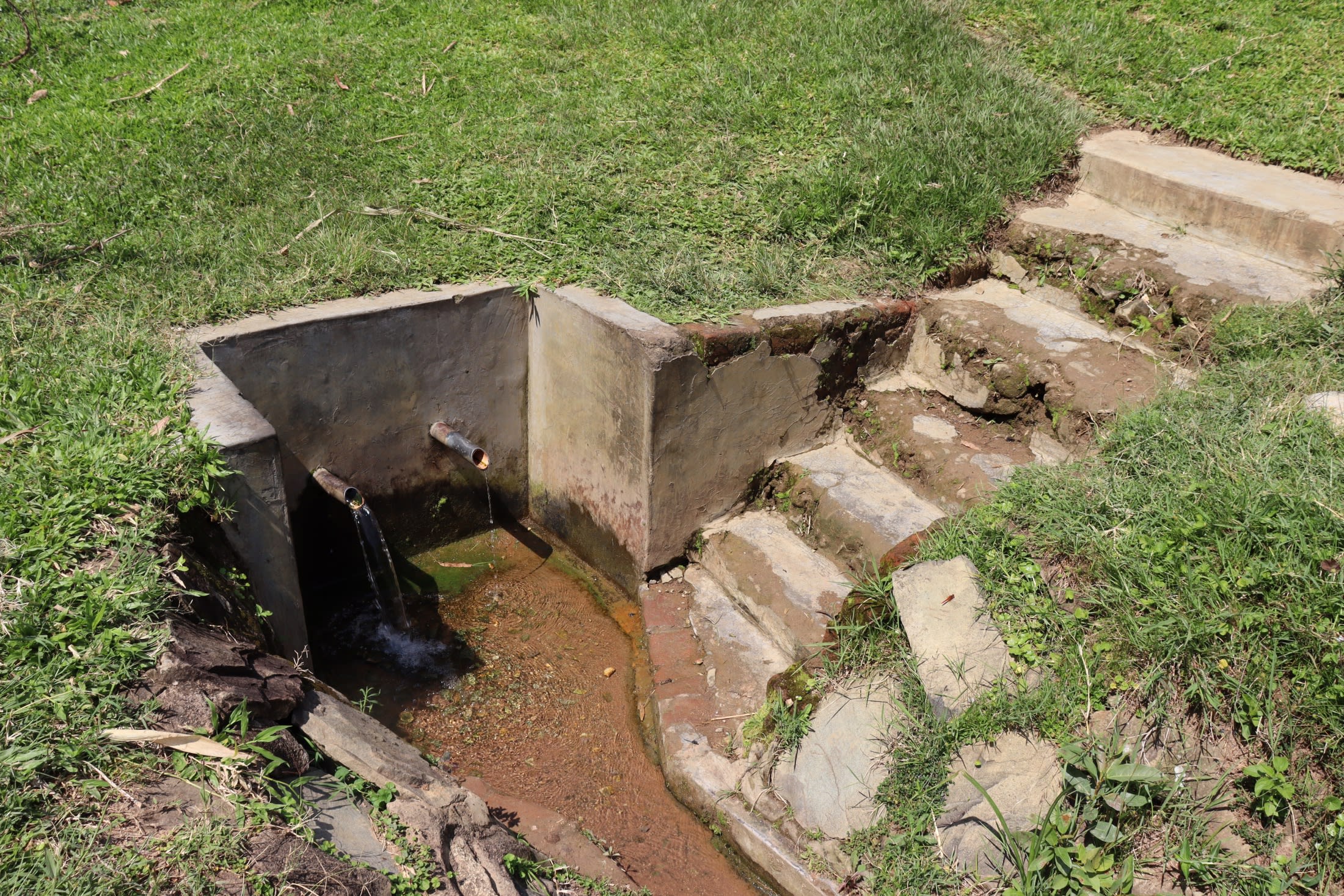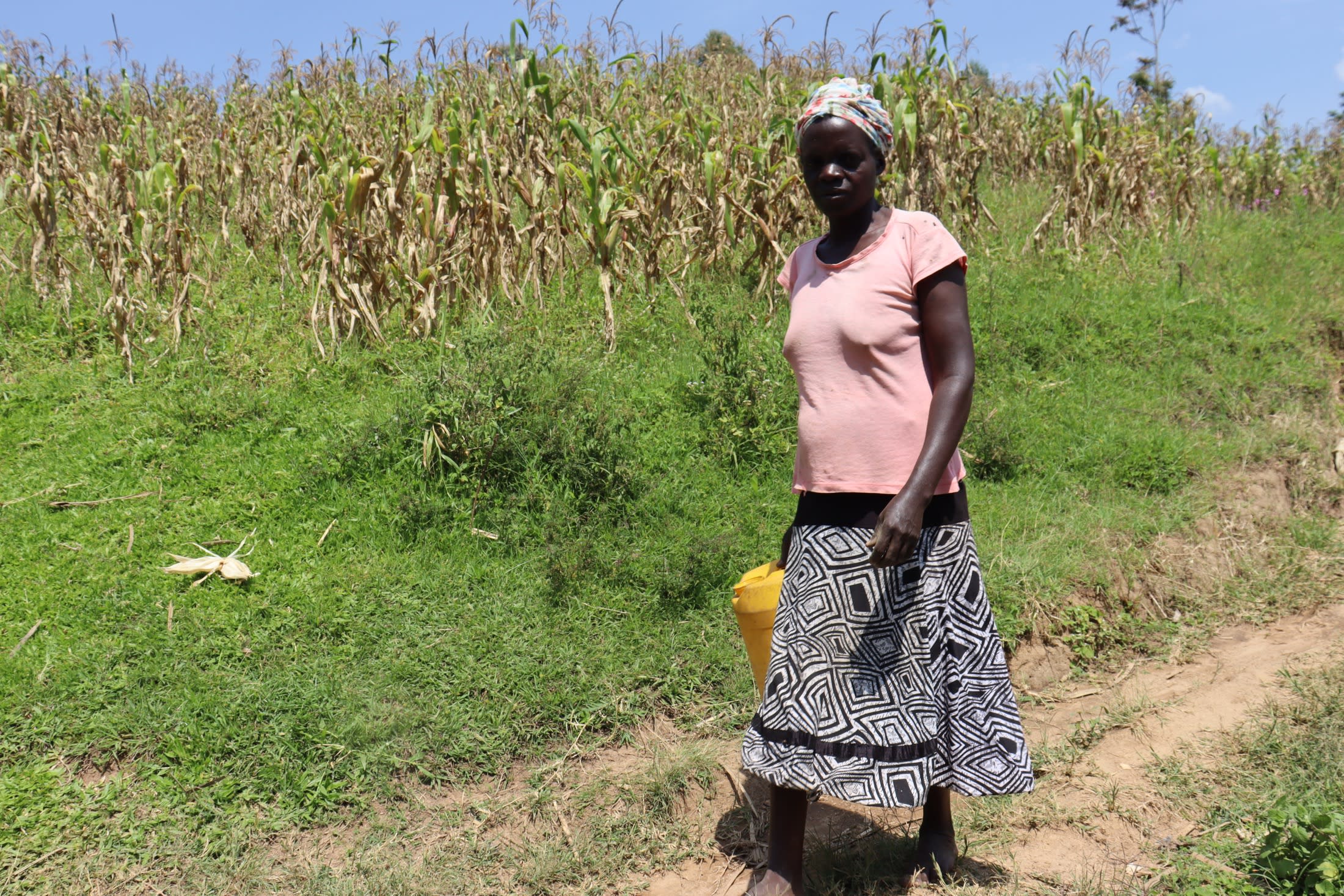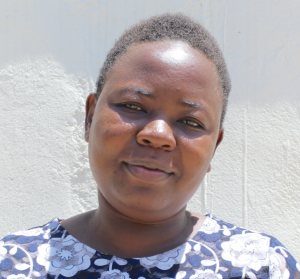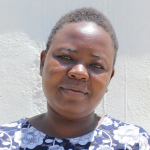The 245 people living in this area of Futsi Fuvili rely on the Isaiah Mwinami Spring to meet their daily water needs, but because of its current condition, it does not operate efficiently and offers drinking water that often makes people sick.

"Due to water being contaminated, the community members end up spending their little hard-earned money on medication, thus contributing to persistent poverty levels," said our field officer Betty Muhongo.
"Personally, I have spent a lot of money on medication treating typhoid," said 44-year-old farmer Mary Soita, shown below carrying water home.

Attempts were made previously by another entity to protect the spring, but they did it incorrectly, and since then, the spring has fallen into disrepair. Runoff from nearby farms runs into the water, and there is no fence to keep animals away. The spring box does not drain properly, causing algae to build up on the spring floor, making it slippery, especially for people who must step into the water to collect. The stairs are crumbling, and water does not flow from the pipes consistently.
All these factors contribute to time wasted by community members who need that vital time for other important tasks like working, attending school, and keeping their homes.
There is water available throughout the year since this spring is not seasonal, unlike many other water sources in the area, but we must rebuild the entire structure to ensure that community members can more easily collect water from a safe source.
"At the beginning of this year, most of the springs around had no water, and since our spring is not seasonal, they had to draw water from the spring. I really wasted my precious time because I need to ensure that there is enough water at home. My performance has really gone down, and it's my humble prayer that you help us protect the spring," said 14-year-old Samuel K, shown below at the deteriorating spring.

With proper protection, community members will be able to quickly collect sufficient, safe water for their needs and get back to accomplishing their daily tasks and hopefully will even be able to improve their lives.
During our training sessions with the community, we will also be sure to share specific issues we've identified that need to improve for this project to be a success. Farming must stop near the spring, and people must take advantage of the chlorine dispenser already at the spring.
"I will be the happiest person in this community when our spring will be protected. I have suffered enough," concluded Mary.
What We Can Do:
Spring Protection
Protecting the spring will help provide access to cleaner and safer water and reduce the time people have to spend to fetch it. Construction will keep surface runoff and other contaminants out of the water. With the community's high involvement in the process, there should be a good sense of responsibility and ownership for the new clean water source.
Fetching water is a task predominantly carried out by women and young girls. Protecting the spring and offering training and support will, therefore, help empower the female members of the community by freeing up more of their time and energy to engage and invest in income-generating activities and their education.
Training on Health, Hygiene and More
To hold training, we work closely with both community leaders and the local government to approve small groups to attend training. We ask community leaders to invite a select yet representative group of people to attend training who will then act as ambassadors to the rest of the community to share what they learn.
The training will focus on improved hygiene, health, and sanitation habits in this community. With the community's input, we will identify key leverage points where they can alter their practices at the personal, household, and community levels to affect change. This training will help to ensure participants have the knowledge they need about healthy practices and their importance to make the most of their water point as soon as water is flowing.
Our team of facilitators will use a variety of methods to train community members. Some of these methods include participatory hygiene and sanitation transformation, asset-based community development, group discussions, handouts, and demonstrations at the spring.
One of the most important issues we plan to cover is the handling, storage, and treatment of water. Having a clean water source will be extremely helpful, but it is useless if water gets contaminated by the time it is consumed. We and the community strongly believe that all of these components will work together to improve living standards here, which will help to unlock the potential for these community members to live better, healthier lives.
We will then conduct a small series of follow-up trainings before transitioning to our regularly scheduled support visits throughout the year.
Training will result in the formation of a water user committee, elected by their peers, that will oversee the operations and maintenance of the spring. The committee will enforce proper behavior around the spring and delegate tasks that will help preserve the site, such as building a fence and digging proper drainage channels. The fence will keep out destructive animals and unwanted waste, and the drainage will keep the area's mosquito population at a minimum.

 Protected Spring
Protected Spring
 Rehabilitation Project
Rehabilitation Project





































